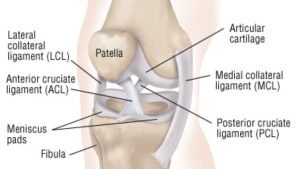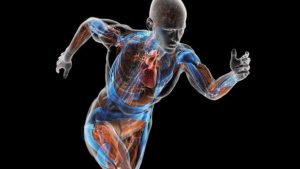Physiotherapists, Exercise Physiologists… what’s the difference?
Following on from our recent piece exploring personal trainers and exercise physiologists, it felt only natural to look deeper into the world of allied health – in particular, physiotherapy and exercise physiology.
As an exercise physiologist, it’s extremely common that I’ll be on the receiving end of: “so… what’s the difference between you and a physio?”. This enquiry comes from patients, friends, family members, other health professionals… and it is a valid question. There can be some overlap between our worlds, but like most things, we work better together.
I always begin with the fact that exercise physiology is a relatively new profession. Our national body ESSA was founded in 1991, with Medicare recognition granted to exercise physiology services in just 2005. Compare this to the Australian Physiotherapy Association, which was established in 1906, and you can see why people are more familiar with their local physio!
First, let’s look at what the two professions have in common:
- Both university qualified for a minimum of four years
- Both services recognised through Medicare, TAC, Workcover and private health insurance
- Both endeavour to optimise health and wellness, reducing the impact of disease and disability, using carefully considered movement as therapy
- Both have to meet professional standards and continuing education requirements
- Both participate in evidence-based practice to ensure that treatment is effective
- There is some overlap between modalities such as Pilates, exercise and hydrotherapy, which could be delivered by an appropriately trained EP or physiotherapist.
- Both health practitioners will work closely with the patient to determine the goal and formulate a plan of how they’re going to get there.
From the above common ground, we can start to understand the key points of difference between the two. I was going to sit and start listing differences in scope of practice, diagnostic capability, hands-on vs hands-off treatment, etc… but I believe we learn best through story.
Here are some case studies from Alpha which epitomise exercise physiology and physiotherapy collaboration in action:
Case Study 1: Marilyn* (not testimonial, purely for illustrative purposes)
Marilyn was seeing our physiotherapist Ash for longstanding lower back pain after being referred into Alpha for Clinical Pilates by her osteopath (a great referrer who we work with frequently). After a few sessions of Pilates, Marilyn remembered how much she loved to be active and discussed that she wanted to get back into the gym setting – but she was also scared of re-injuring her lower back. Ash introduced me to Marilyn after her Pilates session one day and we booked in an exercise physiology initial assessment.
Knowing that her lower back pain had been diagnosed, treated, and was actually quite chronic, I worked with Marilyn to re-introduce functional lifting techniques and reduce her fear of movement. We were able to devise a safe and enjoyable gym program for Marilyn, and she still comes in for Clinical Pilates and Clinical Exercise Group each week.
Case Study 2: Vanessa* (not testimonial, purely for illustrative purposes)
Vanessa started coming to see me after treatment for breast cancer had left her with unwanted weight gain. She was looking for a realistic exercise routine to fit into her busy lifestyle, as well as motivation and accountability through regular check ins. All was going well, and Vanessa was comfortably heading towards her goal weight, until she completed a fitness DVD that she had at home and experienced some left shoulder pain.
To ensure that our continued exercise plan wasn’t going to cause more harm than good, I referred Vanessa to our legendary physiotherapist Luke, who was able to appropriately diagnose and manage the pain. As a physiotherapist, Luke was also able to provide guidance as to what exercises should and shouldn’t be included in her program. Vanessa felt completely supported and heard; and has since gone on to smash her weight loss goal (all whilst remaining in remission from breast cancer).
- If you’re ever in doubt about which health professional is right for the job; try the following questions on for size:
- Do you have a pain that is new, unexpected, or undiagnosed?
- Do you have an acute sports injury, or have you had recent orthopaedic surgery?
- Do you require a professional to provide hands on treatment for symptomatic relief?
- Is the goal to move from a place of pain and dysfunction to optimal function?
- Do you have chronic pain that has not responded to traditional treatments?
- …If yes, a physiotherapist may be you!
- During a typical session, your physiotherapist will:
- Take a thorough history, assess and diagnose your condition
- Discuss your expectations and desired outcomes from you Physiotherapy treatment
- Educate you regarding you condition and offer ongoing support and guidance
- Work with you to understand your goals whether that is completing a triathlon, sitting without pain, returning to golf or being able to walk to your letter box.
- Work with you to develop a clear treatment and prevention plan
- Utilise manual therapy techniques to give you symptomatic relief
- Prescribe home exercises and other interventions such as trigger point release, foam rolling or ongoing pain education.
- Liaise with your care givers such as GPs or Specialists to ensure a collaborative approach to your management
- Alternatively, if you are answering yes to the following questions:
- Are you recovering from an injury, or have a prior injury you don’t want to exacerbate, but wish to get fit and healthy?
- Do you have a chronic health condition (diabetes, hypertension etc) which exercise would assist with?
- Do you have goals around weight management?
- Do you need motivation and goal setting around the psychology of exercise?
- Do you want specifically tailored and prescribed exercise which meets your health and wellness needs?
- …an exercise physiologist may be for you!
- A typical session with an AEP will include:
- Initial assessment and thorough history to define your current health state and exercise background
- Physical assessment to determine some objective measures such as blood pressure, heart rate, body composition, exercise tolerance and muscle strength.
- Education on how Exercise Physiology can help and how it relates to your presentation / condition
- Completion of a targeted exercise session in the clinic
- Strategies to empower you to meet your exercise, health and wellness goals including motivational techniques, exercise and lifestyle planning and ongoing education and support.
- A clear home exercise program with clearly defined goals and milestones.
- Communication with your care givers such as GPs or Specialists to ensure a collaborative approach to your management.







